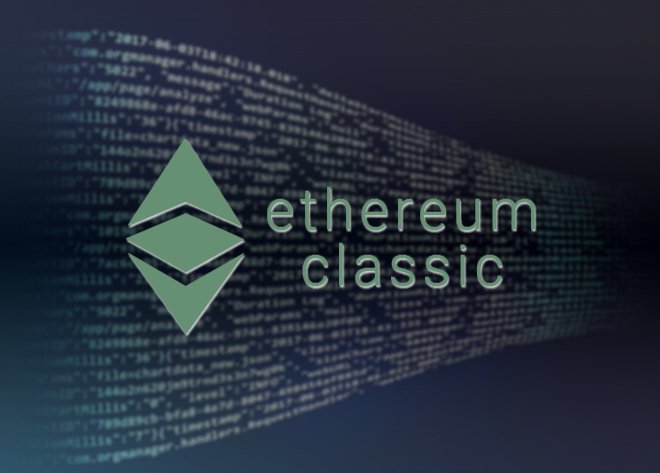Two years after the DAO hack, Ethereum is the second biggest cryptocurrency in the world in terms of both daily transacted value and market cap.
Given this success, quite a lot of people seem to question why Ethereum Classic exists and what purpose it serves. Is it just a defiant political and philosophical statement that is meant to show the world that the community split was unnecessary and immutability works quite well? Does it serve any practical purpose or have any unique features, or is it just the result of proud developers who opposed arbitrary human intervention?
These legitimate questions have been raised more often since the surprising addition of ETC to Binance and the announcement that Coinbase would soon support it too.
In order to clarify all of these questions and present a detailed insight on Ethereum Classic’s roadmap and development, the ETCDEV founder and CTO Igor Artamonov has participated in a Coincast interview. The questions he received from the Korean host were direct and unforgiving, but the answers have managed to draw a clear distinction between ETH and ETC.
Exclusive Interview: Igor Artanomov @splix, Founder & CTO @ETCDEV talks:
– #Decentralization & ETC
– #ETH & $ETC
– Monetary Policy
– #Scalability via sidechain
– #IoT M2M protocol
– IoT optimized SputnikVM#EthereumClassic#ClassicIsComing https://t.co/jrb7vOE4qc— Classic is Coming (@ClassicIsComing) June 29, 2018
What is the difference between ETH and ETC?
In a space where people become rather surprised to discover that Ethereum Classic is actually the original blockchain and carries most of the initial core values, this is perhaps the most striking and relevant question.
First of all, ETC seeks to be much more decentralized by taking a Bitcoin-like approach. Perhaps that a statement like “ETC is to ETH just like LTC is to BTC” would be slightly accurate thanks to the architectural similarities and differences in coin supply, but the situation is more complex.
There are three important dimensions to this goal to retain a high degree of decentralization:
- “code is law” approach which opposes arbitrary human intervention on the transactions
- a commitment to the Proof of Work mining algorithm which ensures greater long-term security
- a distribution of coins which discourages high concentrations among developers.
ETH has an unlimited coin supply that’s generated through a fixed inflation algorithm, ETC has settled for a hard cap of 210 million (102.6 are in supply now). The Ethereum Foundation can intervene and roll back the blockchain if something unwanted happens (DAO hack), whereas the ETCDEV team will never overrule the immutability of the ETC blockchain. While ETH is transitioning to a PoS system that creates more centralization under the “governance” label, ETC is committed to stick to the original values of cryptocurrencies. According to Igor Artmanov, the ETCDEV team doesn’t get involved in trading and isn’t very much concerned about the price – their work is much more about developing the technology and completing the planned roadmap.
Secondly, in spite of their more libertarian ethos, ETC has a smaller following and doesn’t benefit from the same amount of development contributions. The teams working on the announced roadmap plans are smaller and take more time to release their work, and there are situations where this can be a big inconvenience.
However, as ETH transitions towards Casper PoS, it’s expected that miners will jump into the ETC ship and help the coin grow. If the ETCDEV team holds even a small percentage of coins (or mines some), then they are going to become more resourceful as the interest for the project grows and more people trade it.
Ethereum Classic Network Stats
– $1.5B Market Cap
– $216M Trade Vol– 50,908 Daily Transactions📈
– 32,029 Active Addresses
– 2,060 Avg Tx/hr
– 0.0059 USD Avg Tx Fee– 14.1s Block Time⚡️
– 11.695 Thash/s +1.61% in 24 hours⛏️#ETCStats #EthereumClassic #ClassicIsComing pic.twitter.com/qMMGDoWevJ— Classic is Coming (@ClassicIsComing) June 28, 2018
How Is ETC Special?
So the underlying technology and protocols are quite similar thanks to the shared origins, but the long-term vision is quite forked.
More precisely, Ethereum Classic isn’t about ICOs. They won’t try to compete with their bigger sibling in terms of becoming the platform to finance businesses and tokenize the entire crypto space. Instead, they seek to facilitate smart contracts for Internet of Things. And if this combination of buzzwords left you puzzled, then maybe it would be useful to recall Tyler Winklevoss’ interview from February 2018 when he said that cryptocurrencies facilitate machine-to-machine trades of economic value. Cars of the future getting involved in a crash won’t settle the dispute by accessing a bank account, but by making quick crypto transactions to settle the dispute.
This is what Ethereum Classic aims to become: the cryptocurrency which enables all devices connected to the internet to trade value according to smart contracts. There’s a lot of potential in this field, and it’s definitely a goal that’s worth pursuing for our convenience as a civilization. In the future, we might be able to ask Siri to send a tip to the waitress, or program our fridges to automatically order our favourite veggies when they run out.
Last but not least, we should discuss an important point that the ETCDEV team CTO has made during his interview: scalability. He suggested that Proof of Stake isn’t on the ETC roadmap, and ETH doesn’t really do it for scalability purposes either (it has much more to do with efficiency, governance, and energy consumption). Instead, Ethereum Classic will look into a sidechain solution which very much resembles the Lightning Network.
In a nutshell, it’s safe to say that ETC is the middle ground between the philosophies and technical implementations of BTC and ETH. And if you think it’s just a speculative pump and dump asset with no future, then maybe you should do a little more research.









